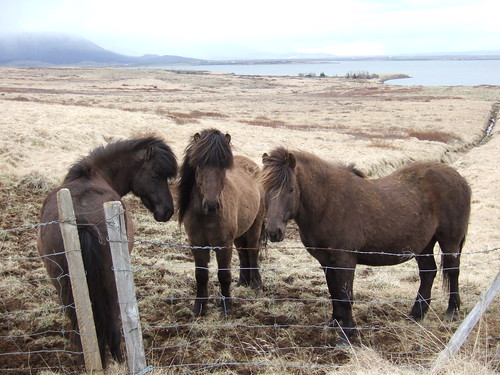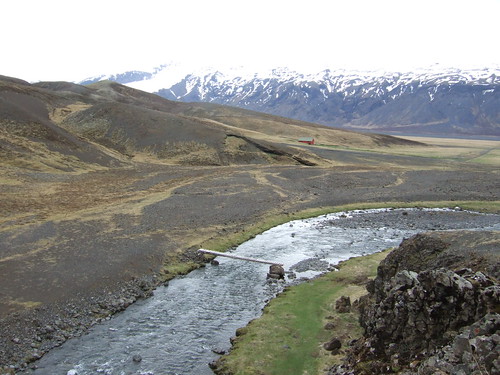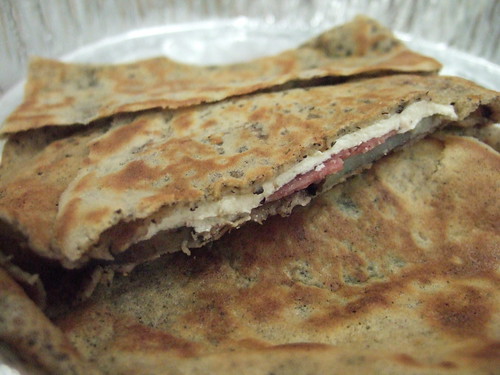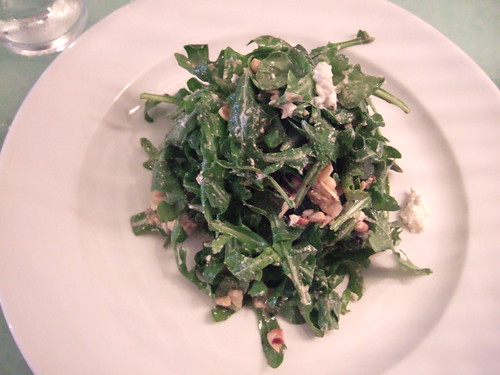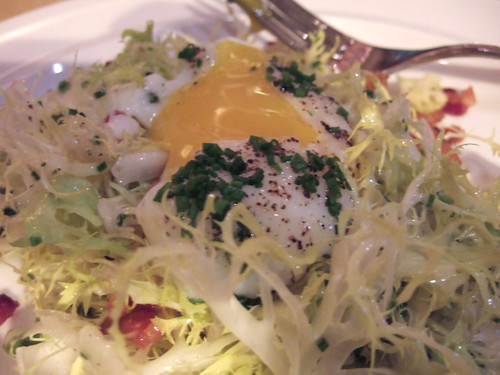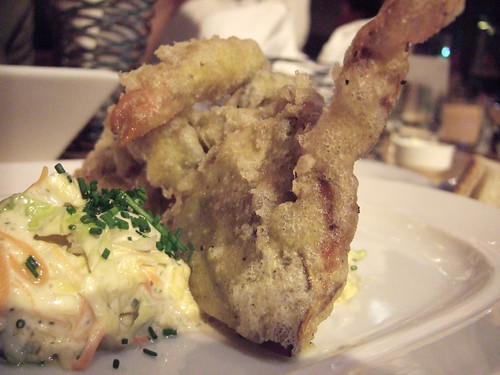The Dr. dreams a lot when we’re on vacation. As I tried to enjoy my morning sleep, the best type of all sleeps, he flinched and murmured with his eyes closed. I kept waking up because of him that by the time I felt like I’ve had a complete, uninterrupted sleep, it was already 1pm. Luckily, the sun does not start setting until about 11pm so we knew we had plenty of time.
We decided to go to Selfoss and get closer to the volcano Hekla since the road to Langjökull and Hofsjökull was closed. On our way to Selfoss, we saw a tour bus make a turn to Kerio. We followed it and parked our car. There wasn’t anything on the map but it turned out to be a beautiful crater full of water.
There was nothing in the town of Selfoss except a closed bakery (what, no fresh bread after 3pm?) and a library where we paid 100 kronas to use the Internet and email back home. We continued on for what seemed like miles and miles of dark earth to Mount Hekla. In medieval Europe, it was known as one of the twin mouths of hell because of how menacing it looked, hiding behind thick clouds. It is still active and the last eruption was in 2000. We stopped a couple of times to film the vast bleak view ahead of us. I found a few horses who were willing to cooperate, but otherwise, we didn’t really do much except drive.
We made up for it the next day. We felt like we were finally, truly in Iceland. We started our drive early towards Fljotsdalur. There were few houses on the road past the town of Hella but it was a very scenic route. I remember thinking, I wish we can stay in one of those small barns with grass on the roof. To my delight, the Fljotsdalur was one of them!
We met Paul, one of the founders of the house with the infamous Dick Philipps of England. He’s been coming to Iceland for the summer the last 30 years. They do group hiking tours to þorsmork, or Thor’s forest. You can go there from hostel to hostel and cross the path between two icecaps, Eyjafjallajokull and Myrdalsjokull, but alas, we had to stay loyal to our tiny car which could only do so much. We only had a night so we decided to spend the rest of the day walking around the area.
We walked up to the gorge and crossed a sheep farm to get closer photographs of Eyjafjallajokull. We crossed a bridge to go over a raging river and get on the other side. It felt like we were the only two people in the world. We walked for about three hours, taking photographs, shooting videos. It got cold when the clouds moved in. The sheep started walking back to the farm. We knew it was time to head back.
When we returned to the hostel, we met a Dutch couple and two Germans. It wouldn’t be a quiet night after all. The six of us all ended up chatting with Paul during dinner. The Dr. made a mean potato-cabbage salad with stewed chicken for our meal. (Everyone was amazed at how we simply could not subject ourselves to a simpler meal when hiking. They obviously don’t know us that well.) In exchange for some cooking oil, we gave Paul a glass of wine. In exchange for a Tupperware container to take leftovers with us, we served him a plate during dinner. It was a nice night of getting to know strangers in a new country.
Related post/s:
Day 2 and 3 in Iceland: Laugarvatn to Fljotsdalur photos on Flickr
Day 1: Keflavik to Laugarvatn, Iceland

